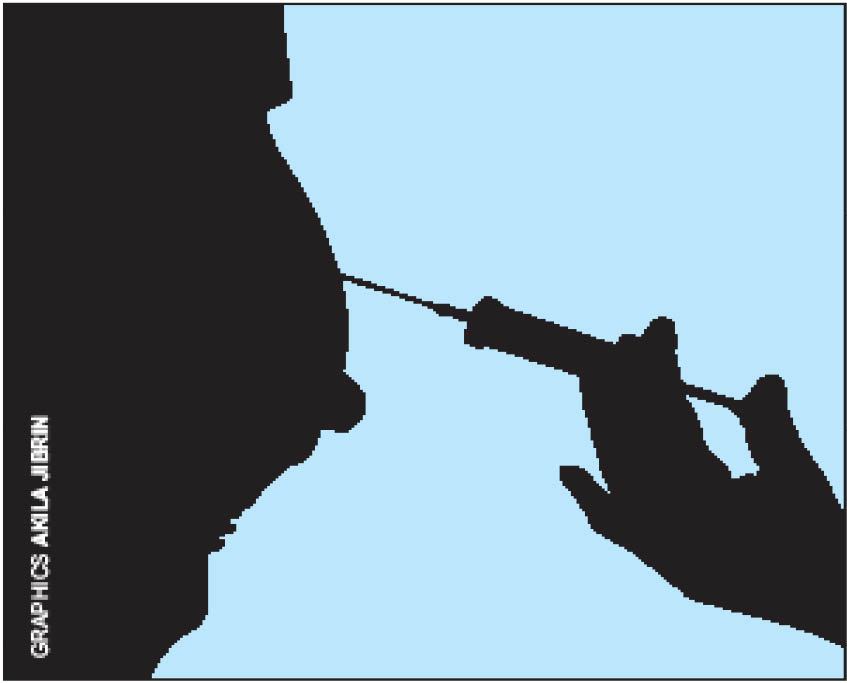John, 24 just graduated from the university and is awaiting his call up letter for National Youth Service Corps (NYSC).
He observed that his right leg was very thin compared to the left one. He also has difficulty raising the right leg and walking with it.
He got worried about not being able to cope with the drill at the NYSC camp and decided to go to the hospital.
Clinical assessment revealed that John’s complaints started after he was treated for fever with many injections on his right buttock when he was about three years old (based on what his mother told him).
He was diagnosed of injection palsy at the hospital.
According to Akingbade B. Thomas, a clinical physiotherapist at the Central Hospital, Benin City, Edo State, said injection palsy, also referred to as sciatic nerve injection injury, is caused by intramuscular injection at the buttock region.
“It is a situation where there is a loss of movement and or lack of sensation at the affected lower limb extremity with or without pain.
“Injection palsy can begin immediately or hours after receiving intramuscular injection at the buttock, following damage to the sciatic nerve”.
He explained that children are more vulnerable to injection palsy, because of the variation in the thickness and depth of their buttock muscle.
“Children with injection palsy, with a feature of foot drop (inability to bend the foot upward), are thought to have polio until it’s clinically diagnosed.
“An unpublished four years retrospective study (2017-2020) at Physiotherapy Department, Central Hospital, Benin City, found 50 cases of injection palsy prevalence among children, aged between 1-8yrs”, he said.
He said the World Health Organization (WHO) has reported that more than 50 percent of intramuscular injections given globally, were unnecessary.
Causes
Akingbade said unnecessary injection and faulty techniques in the administration of an injection by unqualified personnel, are the major causes of sciatic nerve injection injury.
He said, “The injury to the sciatic nerve, is caused by the combined adverse effect of the injection needle and the administered drug that impacted the nerve directly or closely”.
The expert said persistent and most reported symptoms are pain, muscle weakness and abnormal walking pattern
“Foot drop, which could be a complete inability to actively bend the affected foot up or down, or difficulty in being able to do so. The affected leg is bent involuntarily sideways when walking.
“Numbness and abnormal sensation. When injection palsy has become chronic and unresolved, muscular atrophy (thinness) and tiptoe deformity can occur”
Prevention
He said to prevent injection palsy, the injection should be given only when necessary while quacks should be avoided, in a quest to maximally reduce the incidence of injection injury.
Ways it is treated
The clinical physiotherapist explained that though drug therapy or surgery may be indicated in some cases, physiotherapy management is the first line conservative approach, for the management of patients with sciatic nerve injection injury.
He said, “Pain modulating devices, massage, gentle stretching and desensitisation techniques are employed to manage the resulting pain, retain soft tissue flexibility, assist nerve regeneration and lessen muscle atrophy.
“Also, exercise therapy is targeted at maintaining the physiological properties of the completely weak muscles and increase the muscle strength.
“Splint or corrective brace is used to prevent deformity and associated risks, e.g Ankle Foot Orthosis (AFO).”
The expert noted that sciatic nerve injection injury, is a nerve injury, and due to the physiological nature of the nerve, the rate of healing is slower and complex, compared to muscular injury.
“An average case of uncomplicated sciatic nerve injection injury takes an average of four months of physiotherapy management before it’s completely healed.
“Due to this prolonged healing period and associated financial cost, some parents are discouraged from enduring to the time that complete healing occurs,” he added.
Akingbade said though injection palsy is a serious case, deformity can however be prevented.
He called on parents to endure the tortuous process of achieving healing of sciatic nerve injection injury, so that the permanent deformity associated with badly managed cases of injection palsy, is prevented.

 Join Daily Trust WhatsApp Community For Quick Access To News and Happenings Around You.
Join Daily Trust WhatsApp Community For Quick Access To News and Happenings Around You.


